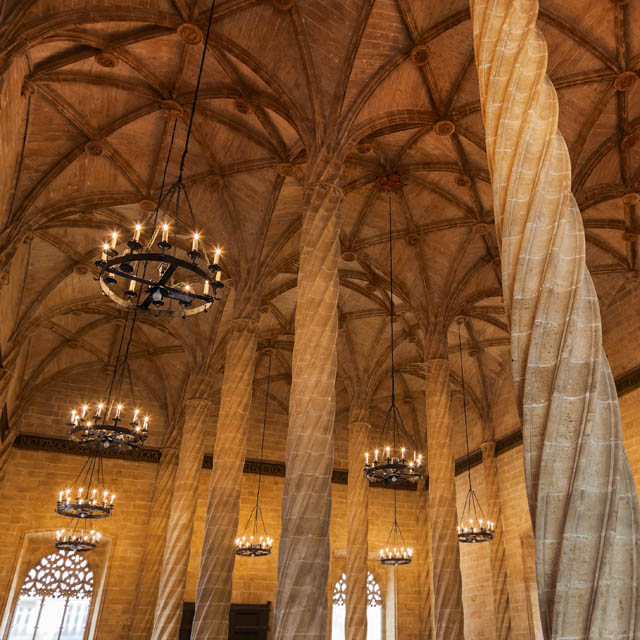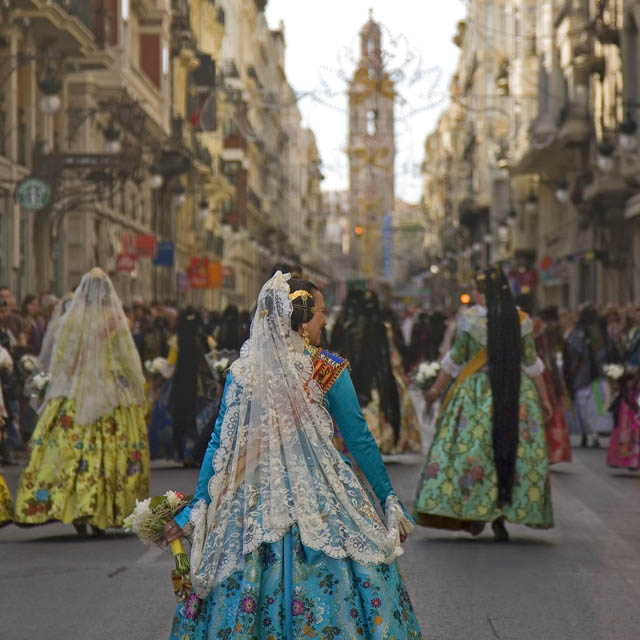Sights on the route
You can take the silk route independently or join a guided tour. The guided tour takes approximately two hours and is available in English and Spanish. You can book online on the city’s tourism website. The route starts in the Velluters district (Velluters means velvet-makers). This neighbourhood grew fast from the 15th to 18th centuries thanks to the silk industry. Here you can visit the Silk Museum and see textile collections and working 18th century looms. It also has the largest European archive of the silk trade and an interesting shop selling silk products.The other must-see on the route is the Silk Exchange, in the centre of Valencia. It is the most important secular Gothic building in the city, and is a UNESCO World Heritage site. It was the key location of the local silk trade. Today we can visit the Hall of Columns, where the dealers used to haggle.








